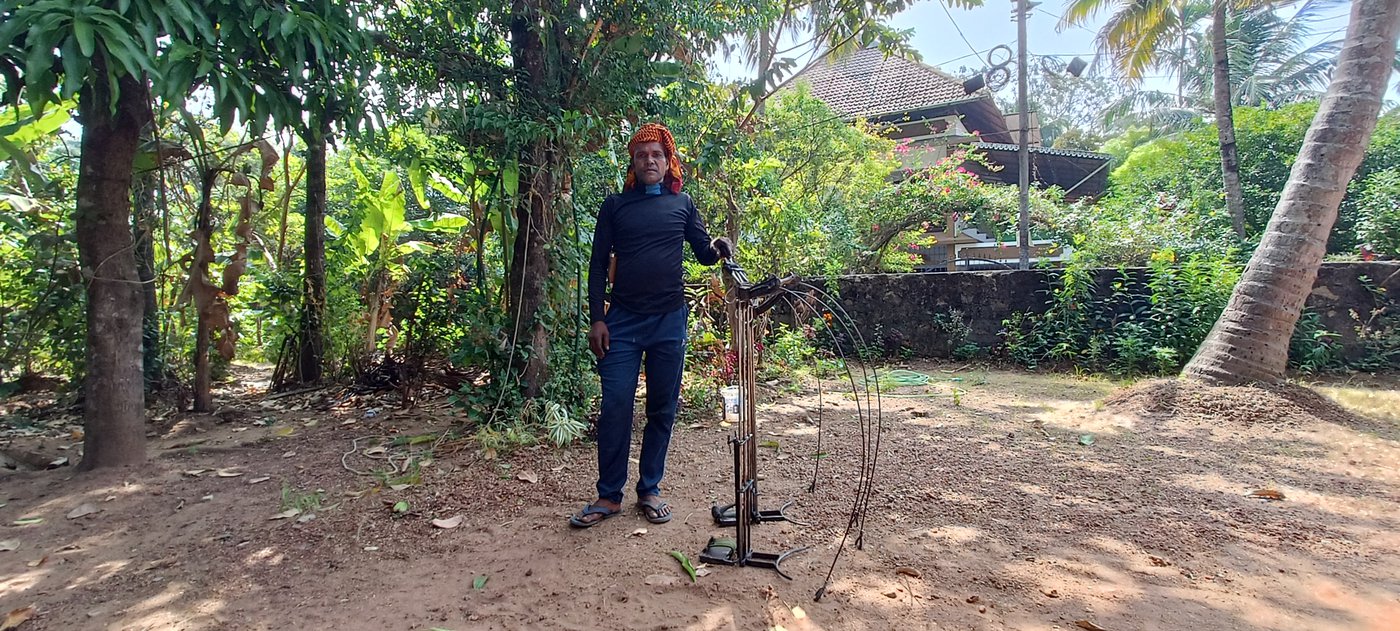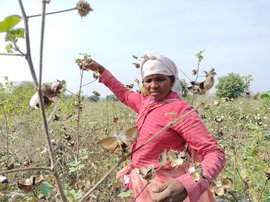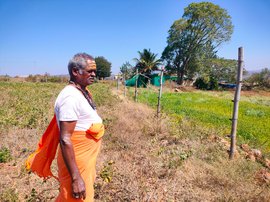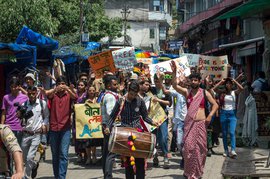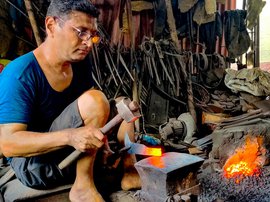Looking down from the top of the 25-metre high tree, Humayun Sheikh shouts out in Hindi, “Move! Or you’ll get hurt.”
Assured that no one is directly below him, he swings his curved knife in a single graceful motion, and the coconuts rain down. Thud! Thud!
In just a few minutes the job is done and he’s back on the ground. His extraordinary speed – up and down in just four minutes – is possible because unlike traditional coconut pluckers, Humayun uses a mechanical alternative designed to climb up and down a coconut tree’s trunk.
The equipment he uses resembles a pair of feet with foot-rests. A long rope is attached to it that goes around the trunk. It allows Humayun to climb the tree as if he was merely ascending a staircase.
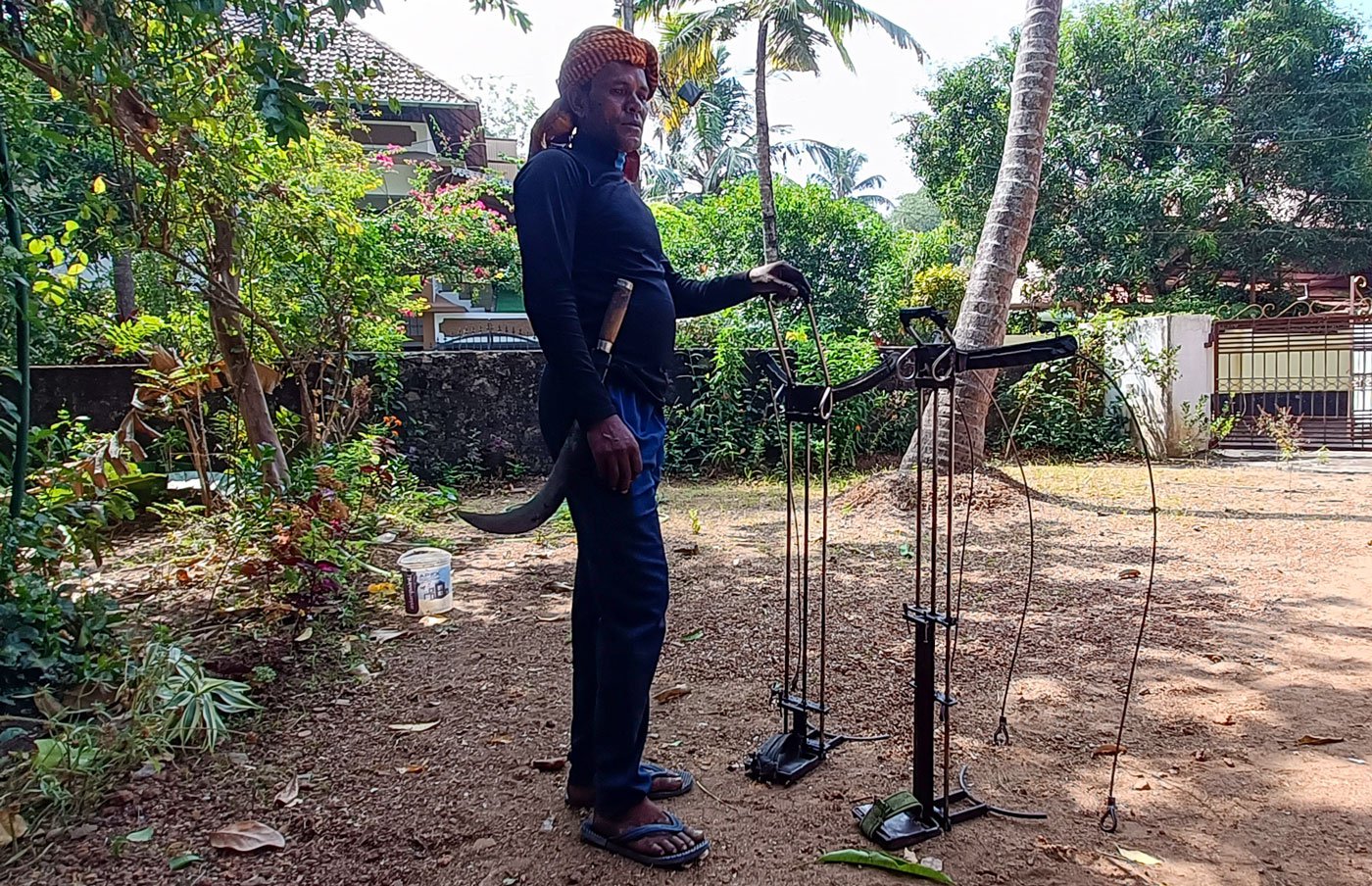
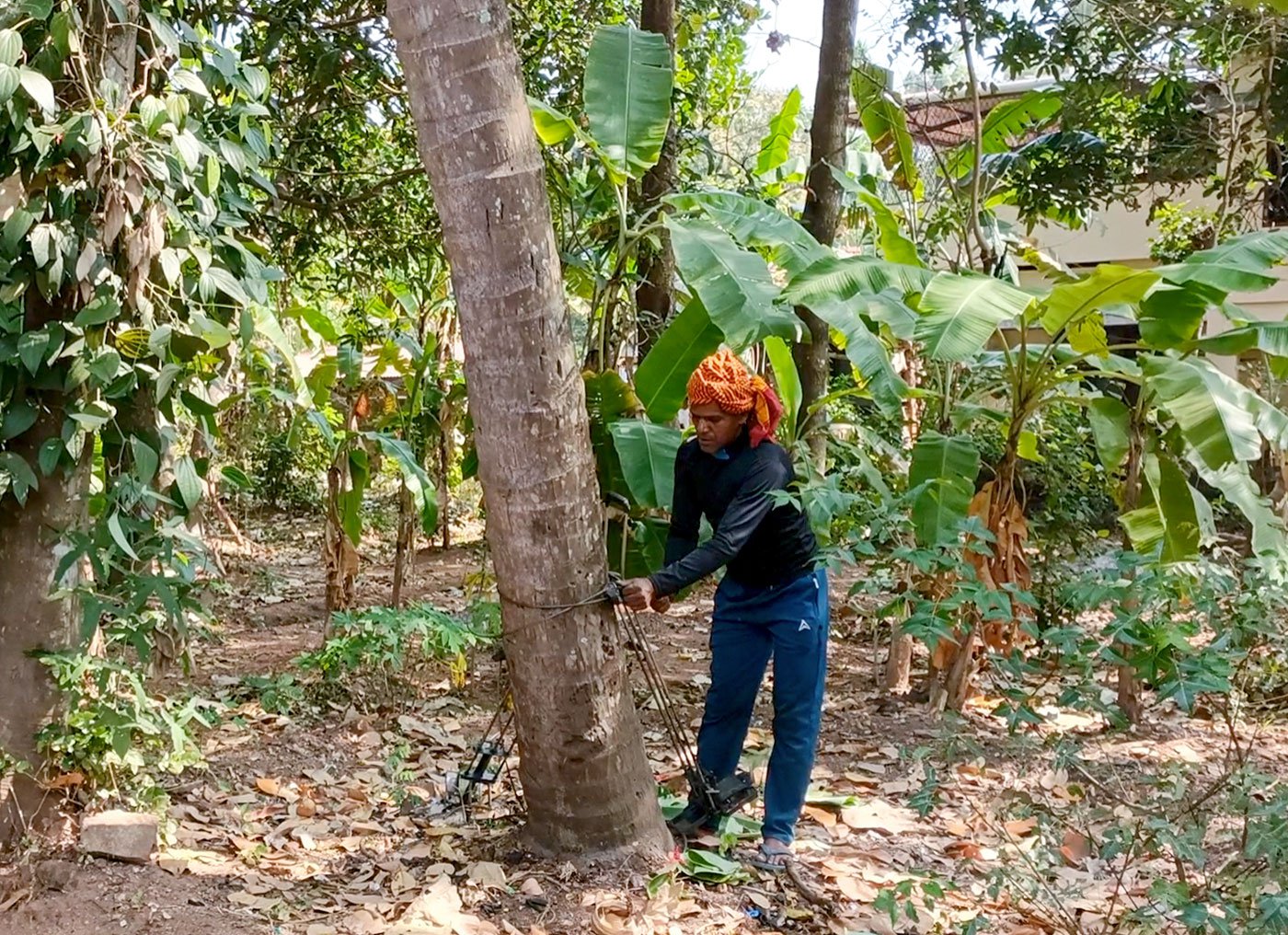
Left: Humayun Sheikh's apparatus that makes it easier for him to climb coconut trees. Right: He ties the ropes around the base of the coconut tree
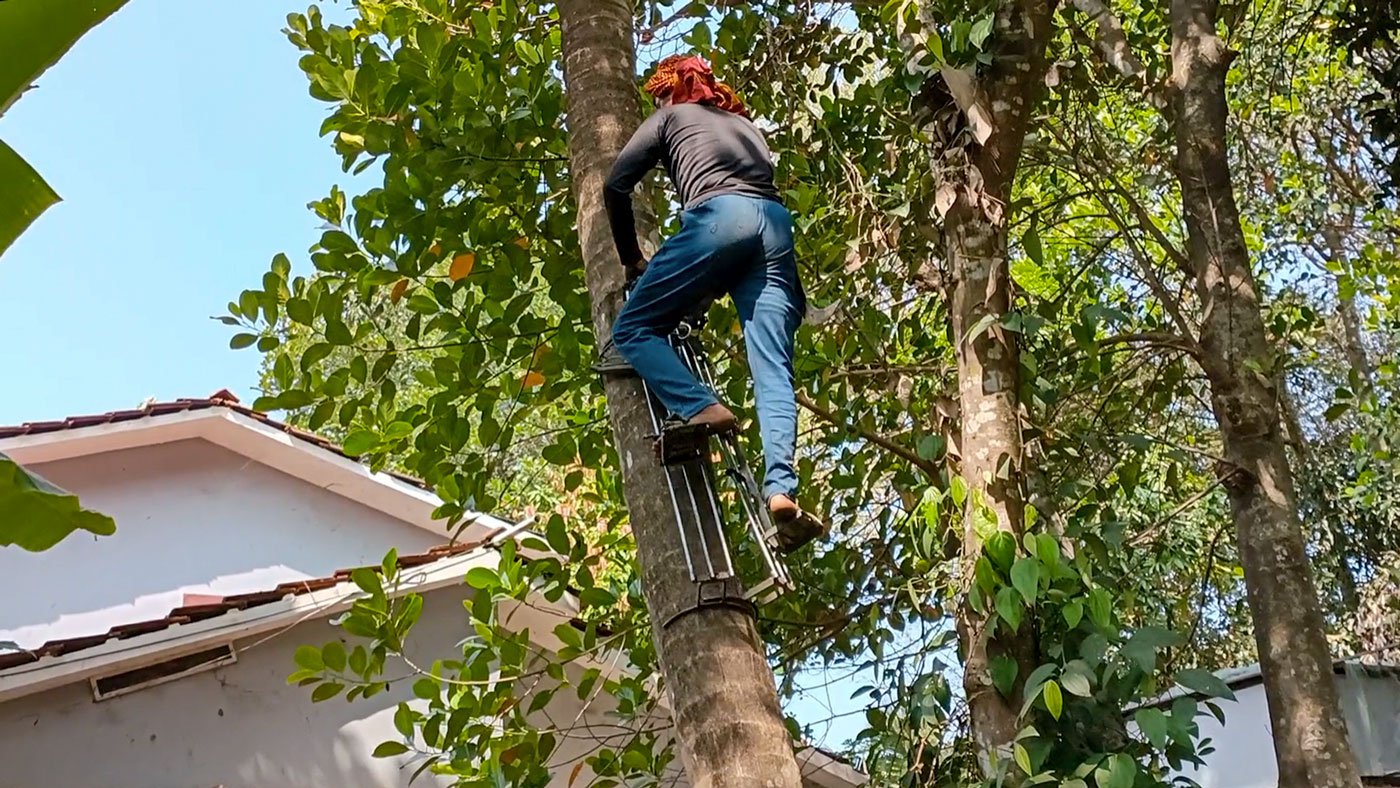
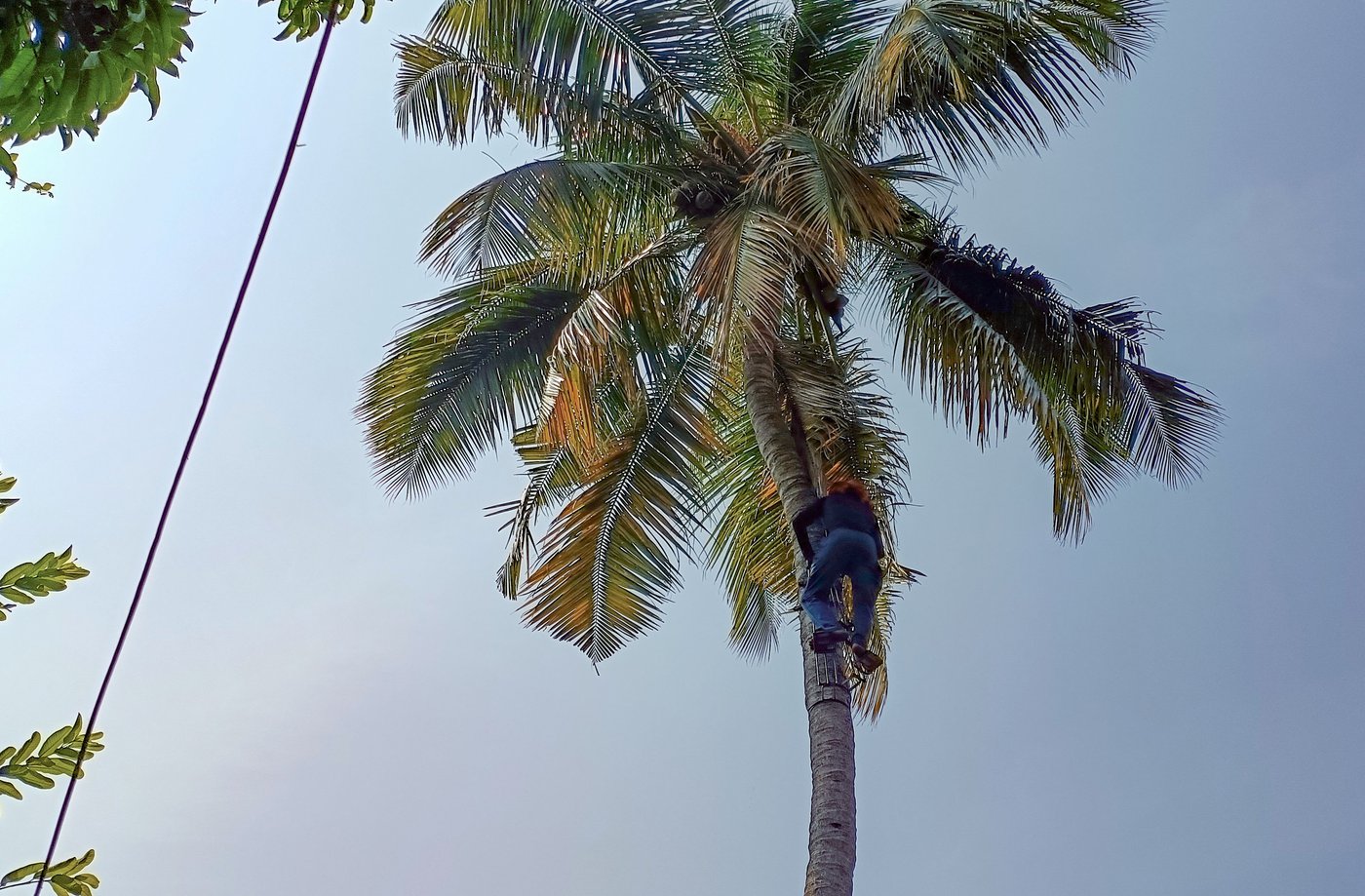
It takes Humayun mere four minutes to climb up and down the 25-metre-high coconut tree
“I learnt how to climb [using the apparatus] in one-two days,” he says.
A migrant from Goalchandpur village in Nadia district of West Bengal, Humayun was used to climbing coconut trees back home which made it easier for him to learn.
“I bought this [apparatus] for Rs. 3,000 and then I went along with my friends here for a few days. Soon I started going alone,” he says.
There is no fixed amount he earns. “Sometimes I earn Rs. 1,000 a day, sometimes Rs, 500 and sometimes nothing at all,” he says. Humayun charges according to the number of trees he needs to climb in a house. “If there are only two trees, I will charge Rs. 50 per tree. But if there are many, I reduce the rate to Rs. 25 per tree,” he says. “I don’t know [Malayalam], but I manage to negotiate rates,” he says.
“At home [in West Bengal], we don’t have such equipment to climb trees,” he says and adds that it is becoming popular in Kerala.
The equipment he uses resembles a pair of feet with foot-rests. A long rope is attached to it that goes around the trunk. It allows Humayun to climb the tree as if he was merely ascending a staircase.
Humayun migrated to Kerala three years ago [in early 2020] just before the pandemic hit. “When I first came I used to work in farms as a daily wage labourer,” he recalls.
He came to Kerala because he says, “ Kaam kaaj ke liye Kerala acha hai [Kerala is good for work].”
“Then corona came and we had to go back,” he says.
He went back to his home in West Bengal in March 2020 in one of the free trains organised by the Kerala government. He returned in October the same year. When he returned he started working as a coconut plucker.
He wakes up at 5:30 a.m. everyday and cooks first thing in the morning. “I don’t eat in the morning. I have some chhota nashta [snacks] and then go to work, and come back and eat,” he explains. But there isn’t a fixed time when he comes back.
“Some days I am back home by 11 a.m. and on some days it takes by 3-4 p.m. to come back,” he says.
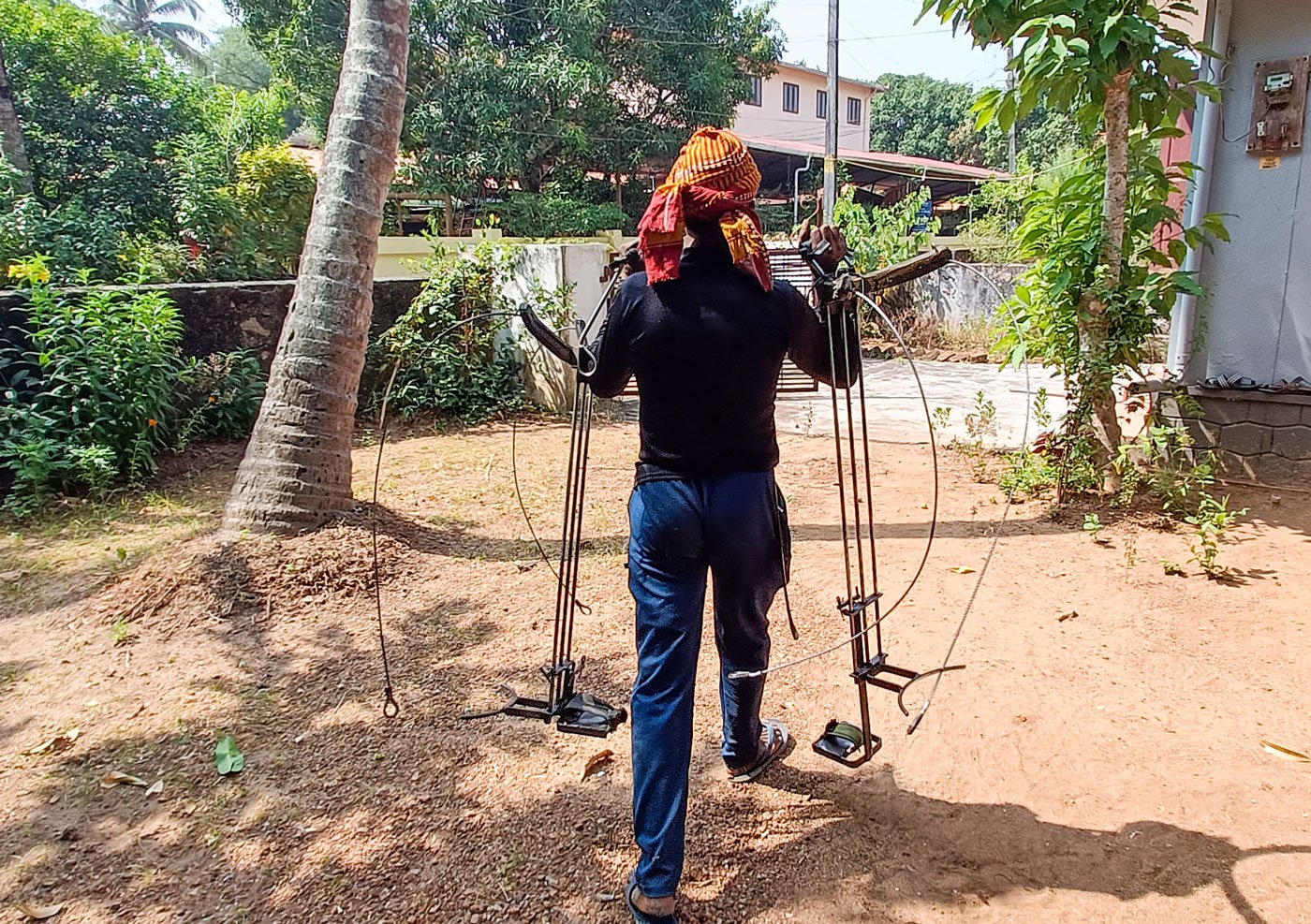
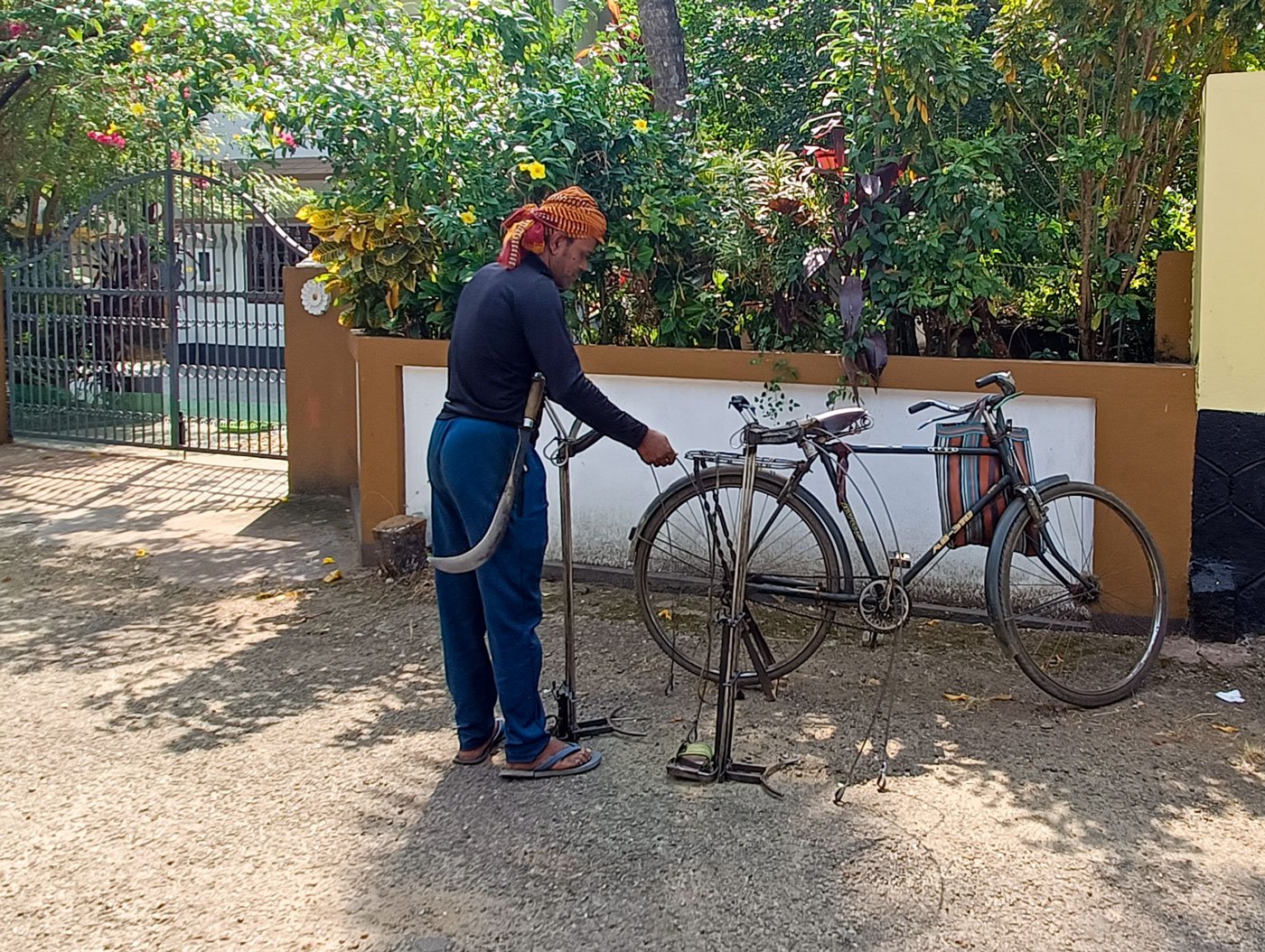
Humayun attaches his apparatus to the back of his cycle when he goes from one house to the other
During the monsoons, his income could fluctuate but having the apparatus helps.
“I have no problem climbing the trees during the rainy season because I have my machine,” he says. But very few people call for coconut-pluckers in this season. “Usually, I get less work when it starts raining,” he adds.
This is why he chooses the monsoon months to visit his family of five back in Goalchandpur- his wife Halima Begum, his mother and three children. The 17-year-old Shanwar Sheikh, the 11-year-old Sadiq Sheikh, the nine-year-old Farhan Sheikh all study in a school.
“I’m not a seasonal migrant. I am in Kerala for 9-10 months and come home [in West Bengal] for only two months,” he says. But he misses his family the months he is away.
“I call home at least three times a day,” Humayun says. He also misses the food from home. “I am not able to make food like [in] Bengal here, but I am managing,” he says.
“For now, I am just waiting to go home in four months [in June].”
